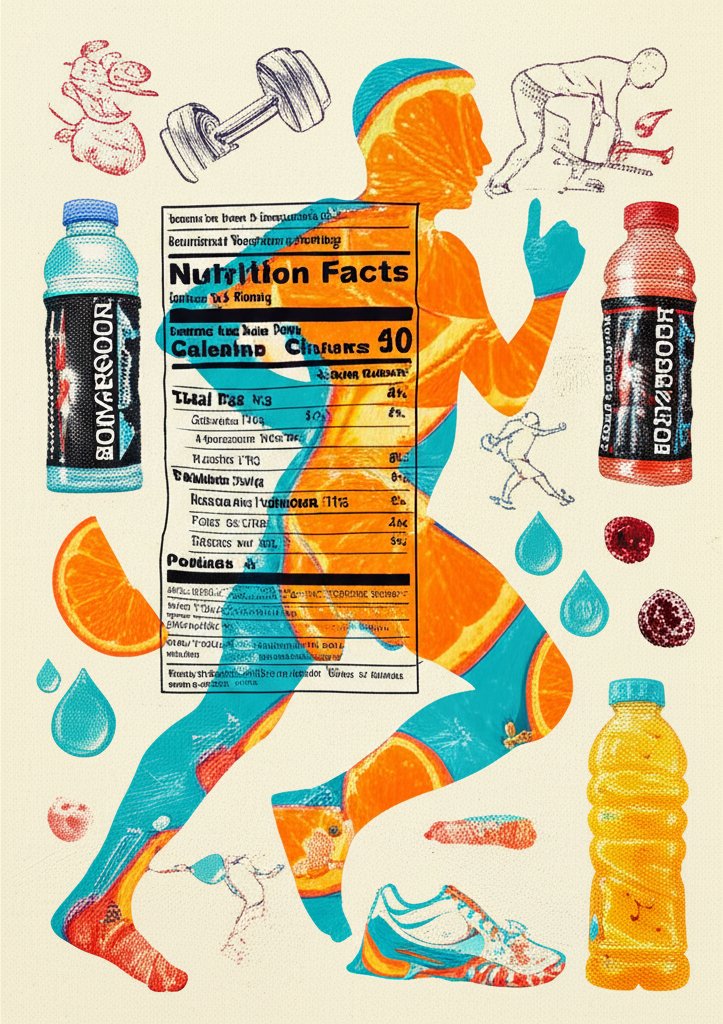Nutrl Nutrition Facts: BodyArmor’s Electrolytes and Added Sugars

Navigating the world of sports drinks means deciphering labels and understanding what you’re really putting into your body. A deep dive into the nutrl nutrition facts of BodyArmor reveals a mixed bag: beneficial electrolytes alongside considerations around added sugars. Are the benefits worth the trade-offs?
At a glance:
- Electrolyte Powerhouse: Discover the specific electrolytes in BodyArmor and how they contribute to hydration and performance.
- Sugar Content Reality Check: Understand the amount and source of sugars in BodyArmor and how it compares to other options.
- Making Informed Choices: Learn how to balance the benefits of electrolytes with concerns about sugar intake, especially for specific needs.
- Lite vs. Regular: A sugar Showdown: Explore the differences between BodyArmor’s regular and “Lite” versions regarding sugar and calorie content.
- Personalized Hydration Plan: Develop a plan that considers your activity level, dietary needs, and health goals.
Electrolytes: The Good Stuff
BodyArmor’s biggest draw is its robust electrolyte profile. These minerals are vital for maintaining fluid balance, nerve function, and muscle contractions, all crucial during physical activity.
- Potassium: A single bottle boasts around 600mg of potassium, significantly more than many competitors. Potassium helps regulate blood pressure and muscle function. Think of it as the “anti-cramp” mineral.
- Sodium: A lower sodium content (around 15mg per bottle) is a plus for those watching their sodium intake. Although athletes need sodium replenishment, too much can be detrimental.
- Magnesium & Calcium: While present, the amounts of magnesium and calcium are less prominent than potassium. Still, they contribute to overall electrolyte balance and are important for bone health and muscle function.
Electrolytes are lost through sweat, making replenishment necessary, especially during intense or prolonged exercise. BodyArmor offers a convenient way to replenish these lost minerals.
Sugar: The Sweet Truth Revealed
Now, let’s talk about sugar. BodyArmor uses pure cane sugar as a sweetener, a “natural” source, but a significant one.
- The Numbers: A typical bottle contains around 29 grams of added sugar. That’s a considerable amount, roughly equivalent to 7 teaspoons.
- The Source: Cane sugar provides quick energy, which can be beneficial during workouts. However, excessive sugar intake can lead to energy crashes, weight gain, and other health issues.
- The Context: Consider your daily sugar intake from all sources. If you already consume a lot of sugar, BodyArmor’s contribution might be problematic.
Consider this: A marathon runner might benefit from the quick energy provided by the sugar, while someone doing a light workout might not need the extra sugar boost.
Balancing Act: Electrolytes vs. Sugar
The key is balancing the benefits of electrolytes with the potential drawbacks of added sugars.
Here’s a decision tree to help you decide:
- Assess Your Activity Level:
- Intense/Prolonged Exercise: Electrolyte replenishment is crucial.
- Moderate Exercise: Electrolytes are helpful, but sugar intake should be monitored.
- Light Activity/Sedentary: Electrolytes are less critical; focus on water and a balanced diet.
- Evaluate Your Dietary Needs:
- Low-Sugar Diet: Opt for BodyArmor Lyte or other low-sugar electrolyte options.
- No Sugar Restrictions: Regular BodyArmor might be acceptable in moderation.
- Diabetes/Insulin Resistance: Consult with a healthcare professional before consuming BodyArmor.
- Consider Your Overall Health Goals:
- Weight Loss: Be mindful of the calorie and sugar content.
- Performance Enhancement: The electrolytes and sugar can be beneficial but use judiciously.
- General Hydration: Water is often the best choice for everyday hydration.
BodyArmor Lyte: A Lower-Sugar Alternative
BodyArmor offers a “Lyte” version with significantly reduced sugar and calories. This option uses stevia and erythritol as sweeteners.
- Sugar Content: BodyArmor Lyte typically contains around 2 grams of sugar per bottle, a huge reduction compared to the regular version.
- Calorie Count: The calorie count is also significantly lower, usually around 20 calories per bottle.
- Electrolyte Profile: The electrolyte content remains similar to the regular version, ensuring you still get the hydration benefits.
Choosing BodyArmor Lyte is a smart move for those looking to minimize sugar intake while still reaping the rewards of electrolyte replenishment.
How BodyArmor Stacks Up to Other Drinks
It’s helpful to compare BodyArmor with other popular sports drinks and hydration options.
| Feature | BodyArmor (Regular) | BodyArmor Lyte | Traditional Sports Drink (e.g., Gatorade) | Coconut Water | Water |
|---|---|---|---|---|---|
| Electrolytes | High | High | Moderate | Moderate | Low |
| Added Sugar | High | Low | High | Low | None |
| Calories | 120-140 | ~20 | 80-100 | ~45 | 0 |
| Artificial Ingredients | None | None | Often Present | None | None |
| This table provides a quick overview to help you make informed decisions based on your specific needs. |
Practical Playbook: Your BodyArmor Hydration Strategy
Here’s a step-by-step guide to incorporating BodyArmor into your hydration strategy:
- Determine Your Hydration Needs: Factor in your activity level, climate, and individual sweat rate.
- Choose the Right BodyArmor: Select regular BodyArmor for intense workouts or BodyArmor Lyte for a lower-sugar option.
- Time Your Consumption: Drink BodyArmor before, during, or after exercise to replenish electrolytes.
- Monitor Your Sugar Intake: Be mindful of your overall sugar consumption and adjust accordingly.
- Listen to Your Body: Pay attention to how you feel and adjust your hydration strategy as needed.
Quick Answers: BodyArmor FAQs
- Is BodyArmor healthier than Gatorade? BodyArmor generally has more potassium and no artificial colors or flavors, which some consider healthier. However, both have added sugar.
- Can I drink BodyArmor every day? It depends on your activity level and dietary needs. If you’re active and need electrolytes, it can be okay in moderation. Otherwise, water is a better daily hydration choice.
- Is BodyArmor suitable for kids? BodyArmor Lyte might be a better option for kids due to its lower sugar content, but water and whole fruits are often the best choices.
- Does BodyArmor hydrate better than water? For intense activity, the electrolytes in BodyArmor can enhance hydration. For everyday hydration, water is sufficient.
- Does BodyArmor contain caffeine? Most BodyArmor varieties are caffeine-free. However, some newer flavors, such as those in the “Edge” line, may contain caffeine, so always check the label.
Understanding the ingredients in BodyArmor drinks is critical to making informed choices. You can find more in-depth information in this article: Ingredients in Body Armor drinks.
Making it work: your actionable take away!
Ultimately, understanding the nutrl nutrition facts about BodyArmor empowers you to make smart choices about how you hydrate. Consider it a tool, not a staple. Leverage its electrolyte benefits strategically, especially during intense physical activity, while keeping a close eye on the sugar content and opting for the “Lyte” version when appropriate. Consider that water remains a champion for overall hydration and a better choice anytime, anywhere. Making informed decisions based on your needs is the best way to hydrate!
- Weight Loss for Men Builds Habits for Lasting Success - October 27, 2025
- How To Lose 50 Pounds In 6 Months The Right Way - October 26, 2025
- Lose 50 Pounds in Six Months Healthily and Realistically - October 25, 2025









